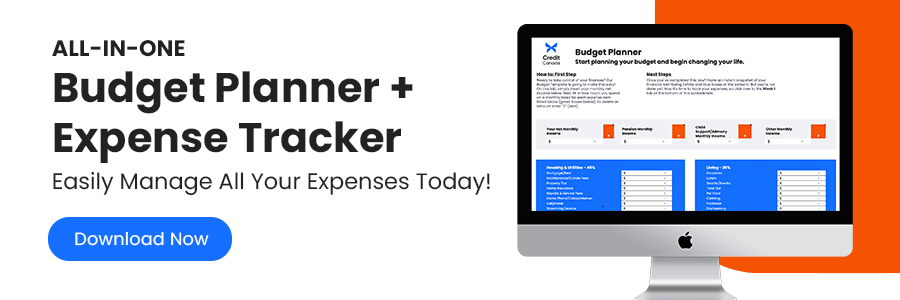
The average Canadian household debt remains near record high levels with the average Canadian owing close to $1.78 for every dollar earned. To put that into perspective, in 1990 Canadians owed $0.90 for every dollar earned. Thankfully we've started to pull back on our borrowing spree, but even though Canadians aren't borrowing as much as we did in the recent past, debt continues to gnaw away at our disposable income. So what gives?
If Canadians are borrowing less than they did before, how come the percentage of Canadians in debt remains just shy of previous record highs? The answer is debt-servicing costs, which is the cost of paying back the debt plus interest.
A Look At the Average Canadian Household Debt
While looking at financial figures and statistics can make some peoples’ eyes glaze over, it’s important to understand the big debt-to-income ratio picture in order to gain a better grasp of your own financial situation. (I promise to make this as painless as possible.) So here we go...
Today, 14.9% of the average Canadian household’s income is going towards debt payments—that’s a huge chunk of change. But what's even more alarming is that some experts estimate that 7.3% of Canadians’ income is going towards interest charges alone. That's the highest it's been in nine years!
The Difference Between Good Debt and Bad Debt
This debt that we’re carrying is made up of mortgage debt and non-mortgage debt. Non-mortgage debt includes things like credit cards, car loans, student loans, and personal loans. Now, there’s good debt and bad debt. Mortgages are considered good debt because homes generally increase in value over time, even considering mortgage interest rates, which tend to be lower than on other loans, like credit cards.
Credit cards on the other hand are considered bad debt due to their very high interest rates. Plus, most things we purchase on credit cards don't increase in value over time. In fact, in most cases, they decrease in value the moment they leave the store.
Rising debt-servicing costs
The income spent on the average Canadian mortgage debt rose to 6.7%, while the percentage spent on servicing non-mortgage debt climbed even higher to 8.2%.
These rising debt-servicing costs will likely “continue to squeeze Canadians’ wallets for the foreseeable future,” as RBC economist Josh Nye wrote in a recent note to clients. He added that even if the Bank of Canada keeps interest rates on hold for the rest of the year, the amount Canadians have to spend on debt repayment will likely continue to increase as homeowners renew fixed-rate mortgages at higher interest rates.
Reducing the Canadian Debt-to-Income Ratio
While most households might be able to keep up with higher payments, they’ll have a harder time making an actual dent to their debt. And as a result, Canada’s debt-to-income ratio is likely to remain unchanged for the foreseeable future.
Curious about your own debt-to-income ratio? Here's how to calculate it:
- Add up all your monthly fixed debt payments.
- Divide this number by your total monthly earnings.
- Multiply this number by 100.
The average Canadian debt-to-income ratio is $1.78; how do you stack up? Regardless of where you land, the lower, the better! Ideally, you want to be below 35 per cent or 0.35. Anything higher than 0.50 means you're moving into the danger zone.
Canada Household Debt Statistics: Where Does the Money Go?
While these statistics might leave you feeling like paying down your debt is going to be even more difficult than you thought, not all hope is lost! The good news is that most of us can manage higher borrowing costs by trimming how much we spend. Of course, it helps to know how much you should be spending for each expense item in your budget.
The chart below breaks down how much you should be spending on different household expenses as a percentage of your total monthly take-home income. It also indicates the amount of money it works out to based on the average Canadian take-home salary, which is about $3,150/month.
|
Household Category |
Percentage of Monthly Budget |
Monthly Spending |
|
Housing |
35% |
$1,103 |
|
Food |
15% |
$472 |
|
Transportation |
15% |
$472 |
|
Utilities |
10% |
$315 |
|
Debt Payments |
10% |
$315 |
|
Personal/Discretionary |
5% |
$157 |
|
Savings |
5% |
$157 |
|
Clothing |
2.5% |
$79 |
|
Medical |
2.5% |
$79 |
Of course, your salary will vary and so will your needs, but this provides some guidelines that can help you with your budgeting. You can read a lot more about managing your household expenses and the five household categories causing Canadians the most debt in our blog, How Much Money You Should Spend on Monthly Expenses.
Need Help With Household Debt?
If you’ve done some of the math and things just aren’t adding up, call Credit Canada at 1.800.267.2272. Our certified Credit Counsellors can review your specific financial situation, your monthly expenses and budget, and then provide you with your best options for managing your debt, all for free. If you’re looking for more than that, they may be able to get you into a Debt Consolidation Program that can have you debt-free in as little as 24 to 48 months. All of our counselling is completely free and confidential, and there's no obligation. So let's get your financial woes off your chest today.
Frequently Asked Questions
Have a question? We are here to help.
What is a Debt Consolidation Program?
A Debt Consolidation Program (DCP) is an arrangement made between your creditors and a non-profit credit counselling agency. Working with a reputable, non-profit credit counselling agency means a certified Credit Counsellor will negotiate with your creditors on your behalf to drop the interest on your unsecured debts, while also rounding up all your unsecured debts into a single, lower monthly payment. In Canada’s provinces, such as Ontario, these debt payment programs lead to faster debt relief!
Can I enter a Debt Consolidation Program with bad credit?
Yes, you can sign up for a DCP even if you have bad credit. Your credit score will not impact your ability to get debt help through a DCP. Bad credit can, however, impact your ability to get a debt consolidation loan.
Do I have to give up my credit cards in a Debt Consolidation Program?
Will Debt Consolidation hurt my credit score?
Most people entering a DCP already have a low credit score. While a DCP could lower your credit score at first, in the long run, if you keep up with the program and make your monthly payments on time as agreed, your credit score will eventually improve.
Can you get out of a Debt Consolidation Program?
Anyone who signs up for a DCP must sign an agreement; however, it's completely voluntary and any time a client wants to leave the Program they can. Once a client has left the Program, they will have to deal with their creditors and collectors directly, and if their Counsellor negotiated interest relief and lower monthly payments, in most cases, these would no longer be an option for the client.
Newcomers & Money 101 Guidebook
Credit Canada Debt Solutions developed a guidebook on basic personal finances for newcomers to Canada, in partnership with the Ministry of Citizenship and Immigration.








